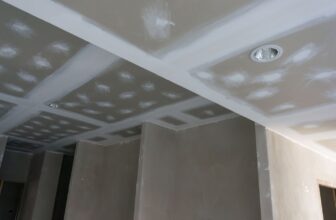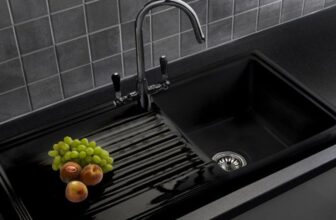Wafer Lights Vs. Can Lights – What’s The Difference?
The lighting you choose to install in your home will have a huge impact on how your living space will look and feel.
Picking the right option requires some strategic planning and taking into consideration the available space, other installations, and the right amount of lights to effectively brighten up your space and provide the desired mood.
If practicality is your main concern, then recessed lighting is probably the best option.
Recessed light fixtures allow you to install them even in tight spaces and give your home a modern and sleek look.
However, even when you narrow down your choice and decide on recessed lighting, there are still a couple of different types you can use.
Two of the most popular types are can and wafer lights.
To help you make the best choice, I’ll compare wafer lights vs can lights and explain the major advantages and disadvantages of both types.
| Wafer Lights | Can Lights | |
| Installation | Easy installation as they do not require a recessed can or housing | More complicated installation as they require a recessed can or housing to be installed in the ceiling. |
| Energy Efficiency | Generally more energy-efficient than can lights, consuming less electricity and producing less heat. | Generally less energy-efficient than wafer lights, consuming more electricity and producing more heat. |
| Light Coverage | Wafer lights produce a more diffused light, which can provide a more even coverage across the room. | Can lights produce a more focused light, which can create a spotlight effect in certain areas. |
| Cost | Generally more affordable than can lights, making them a good choice for those on a budget. | Generally more expensive than wafer lights, making them a good choice for those who want a more high-end look or have a larger budget. |
Table of Contents
What are Wafer Lights?
Wafer, or canless, lights are a style of lighting fixture that comes in a small housing with a LED light built in.
They are installed by directly connecting to the electrical wires, with no electrical box needed.
As the LED lights are built-in, once they stop working, you have no other option but to replace the entire fixture.
Still, LED lights have pretty decent durability and should serve you for around 50,000 hours.
Plus, they won’t stop working all of a sudden, but will rather slowly dim, so you’ll know when it’s the time to replace them.
Each wafer lighting fixture is uniquely designed, so, there are no standard installation procedures.
Still, as they come as a single unit, installing them is rather easy, doesn’t require much experience, and takes only minutes.
Furthermore, they can be installed in places with minimum space and that can’t be serviced from above.
What are Can Lights?
Can lights come with a small cylindrical housing that is installed into the hole in the ceiling and holds a light bulb.
The size of the housing (or can) may differ, but, typically, has a diameter between 3 and 6 inches.
They’re a bit more versatile than wafer lights, as you can use them with both LED and regular bulbs.
The installation process is standard for all types but is a bit complex.
When installing can lights, you’ll need full access to the ceiling, so it’s much easier done in newly-built homes when the drywall hasn’t yet been placed.
Plus, there are some limitations on where you can install them, as they have to be placed according to the joists’ and trusses’ orientation.
However, once installed, they’re quite simple to maintain, as once the bulb goes out, all you have to do is replace it, without installing a new housing.
Wafer Lights Vs. Can Lights – What’s The Difference?
While they, of course, serve the same purpose and, generally, provide similar results when it comes to lighting your home, wafer lights and can lights still have some significant differences.
These differences are what you should consider when deciding to go for one option or the other in your house.
Below is a short rundown of the most important factors that separate these two types of recessed lighting.
Installation
When it comes to the ease of installation process, the advantage is clearly on the side of wafer lights.
This single-unit system makes installation very simple and all you need is a few inches of ceiling space and electrical wiring to which you’ll connect the housing.
Plus, the units are typically so thin, that you can put them almost anywhere.
On the other hand, can lights require full access to the ceiling and are usually taller than wafer lights, meaning that they likely won’t fit when the ceiling void is too shallow.
Plus, you won’t be able to install them if there are other services as plumbing already present above the intended position.
Still, every can light is installed following the standard procedure, which is not the case with wafer lights, as different brands may have a different set of instructions.
Durability
Wafer lights come with a LED light built in, so, they should serve you for around 5 years, or 50,000 hours.
With can lights, you can install either a LED light or a regular bulb, the latter is, of course, cheaper, but will have a much shorter lifespan.
However, when the light stops working, the replacement is much easier if you have can lights installed.
All you have to do is replace the bulb, while, in the case of wafer light, you’ll need to replace the entire fixture.
This also means that there’s a risk that the brand or type of wafer light you initially installed is not available anymore, so you will have to make some adjustments to fit another one.
Light Direction
Can light can provide a very direct light, which is an advantage when you want to highlight a certain piece of interior decor or a specific area in the room.
On the other hand, wafer light is more omnidirectional and better if you need general illumination across the room.
Price
The price of each of these two kinds of light fixtures will vary depending on the type, particularly in the case of wafer lights.
While canless lights are typically between $20 and $50 per unit, this price can go way up if they have some high-tech features, such as smart control.
On the other hand, the can light housing is a bit less expensive, but, bear in mind that you’ll have to purchase the LED light or bulb separately, and the installation should be done by a professional, meaning it will likely cost a lot more.
Conclusion
Recessed lighting has become hugely popular and it’s easy to understand why.
It provides a more elegant feel to the interior of your home, takes less, space, and, in the long run, is much cheaper than traditional types of lighting.
Once you choose to go with recessed lighting, you’ll still have a couple of different options available, with wafer and can lights being the most popular ones.
Each of these has its advantages and downsides, which you should take into account when deciding which one to install.
Before opting for either wafer or can light, you should carefully consider what kind of light you want in your room, what installations already exist in your house, and the available space for new lighting fixtures.
So, make sure you do your homework to ensure that you will be completely satisfied with the type of lighting you choose.



















































































